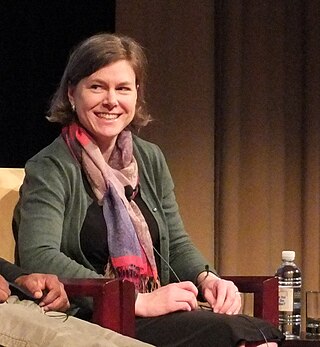
Addison Morton Walker was an American comic strip writer, best known for creating the newspaper comic strips Beetle Bailey in 1950 and Hi and Lois in 1954. He signed Addison to some of his strips.

The Daily of the University of Washington is the student newspaper of the University of Washington in Seattle, Washington. It is staffed entirely by University of Washington students, excluding the publisher, advertising adviser, accounting staff, and delivery staff.

John Burton Davis Jr. was an American cartoonist and illustrator, known for his advertising art, magazine covers, film posters, record album art, and numerous comic book stories. He was one of the founding cartoonists for Mad in 1952. His cartoon characters are characterized by extremely exaggerated anatomy, including big heads, skinny legs, and large feet.

The Michigan Daily, also known as "The Daily," is the independent student newspaper of the University of Michigan published in Ann Arbor, Michigan. Established on September 29, 1890, the newspaper is financially and editorially independent from the university.

Jen Sorensen is an American cartoonist and illustrator who creates a weekly comic strip that often focuses on current events from a liberal perspective. Her work has appeared on the websites Daily Kos, Splinter, The Nib, Politico, AlterNet, and Truthout; and has appeared in Ms. Magazine, The Progressive, and The Nation. It also appears in over 20 alternative newsweeklies throughout America. In 2014 she became the first woman to win the Herblock Prize, and in 2017 she was named a Pulitzer Finalist in Editorial Cartooning.

Arthur Henry Young was an American cartoonist and writer. He is best known for his socialist cartoons, especially those drawn for the left-wing political magazine The Masses between 1911 and 1917.

Ted Key was an American cartoonist and writer. He is best known as the creator of the cartoon panel Hazel, which was later the basis for a television series of the same name, and also the creator of the Peabody's Improbable History animated segments.
The California Pelican was a college humor magazine founded in 1903 by Earle C. Anthony at the University of California, Berkeley. Lasting eighty years, it was the first successful student humor magazine in UC Berkeley, though it was preceded by Smiles in 1891 and Josh in 1895. It is succeeded by the Heuristic Squelch, which is still running.
David Newman was an American screenwriter. From the late 1960s through the early 1980s he frequently collaborated with Robert Benton. He was married to fellow writer Leslie Newman, with whom he had two children, until his death in 2003 from a stroke.

Jay Malcolm Kennedy was an American editor and writer. The author of The Official Underground and Newave Comix Price Guide, he was a long-time editor at King Features Syndicate, eventually rising to the position of editor-in-chief.

Lloyd Dangle is an American writer and cartoonist, illustrator, and political satirist.
Magazine Management Co., Inc. was an American publishing company lasting from at least c. 1947 to the early 1970s, known for men's-adventure magazines, risqué men's magazines, humor, romance, puzzle, celebrity/film and other types of magazines, and later adding comic books and black-and-white comics magazines to the mix. It was the parent company of Atlas Comics, and its rebranded incarnation, Marvel Comics.
Chaff was the students' newspaper at Massey University, New Zealand, from 1934 until 2011.
Harley Schwadron is an American cartoonist whose work appears in newspapers and magazines. His work appears regularly in the Wall Street Journal, Barron's Magazine, Forbes, Harvard Business Review, Playboy, National Law Journal, Reader's Digest as well as many smaller publications. He draws a daily syndicated business panel, 9 to 5, for Tribune Content Agency.
The University of Oregon has a diverse array of student-run and non-student-run media outlets.

The Zamboni is a student-run humor publication at Tufts University. It was founded in 1989 and comes out with six issues per year, or once per month. It contains satirical articles, cartoons, and photos. It is known as "Tufts University's Only Intentionally Funny Magazine" and its motto is "Cowering Behind the First Amendment Since 1989." The Zamboni is fully funded by the Student Activities Fee as allocated by the Tufts Senate.

John Murray Norment (1911–1988) was an American illustrator, gag cartoonist, magazine editor, artist, and photographer.

Charley Jones' Laugh Book Magazine, aka Charley Jones' Laugh Book and Laugh Book, was a monthly digest-size cartoon and joke magazine published by Charley E. Jones at 438 North Main Street in Wichita, Kansas. Edited by Charley Jones, Ceora K. Raymond and Ken Berglund, it ran from 1943 into the mid-1960s. An earlier version was known as Laugh Book Magazine. Offering "something for everyone", it sometimes displayed the subtitle America's Foremost Humor Magazine.
1000 Jokes was a humor magazine launched by Dell Publishing in 1937. With a later title change to 1000 Jokes Magazine, it was published quarterly over three decades. During the 1950s, it was edited by Bill Yates with associate editor John Norment.
The Texas Ranger was the undergraduate humor publication of the University of Texas at Austin (UT), published from 1923 to 1972. A number of people who later went on to become key members of the underground comix scene — including Frank Stack, Gilbert Shelton, and Jaxon — were Texas Ranger editors and contributors during the period 1959–1965. Other notable contributors to The Texas Ranger over the years included Robert C. Eckhardt, John Canaday, Rowland B. Wilson, Harvey Schmidt, Bill Yates, Liz Smith, Robert Benton, Bill Helmer, Robert A. Burns and Wick Allison.












